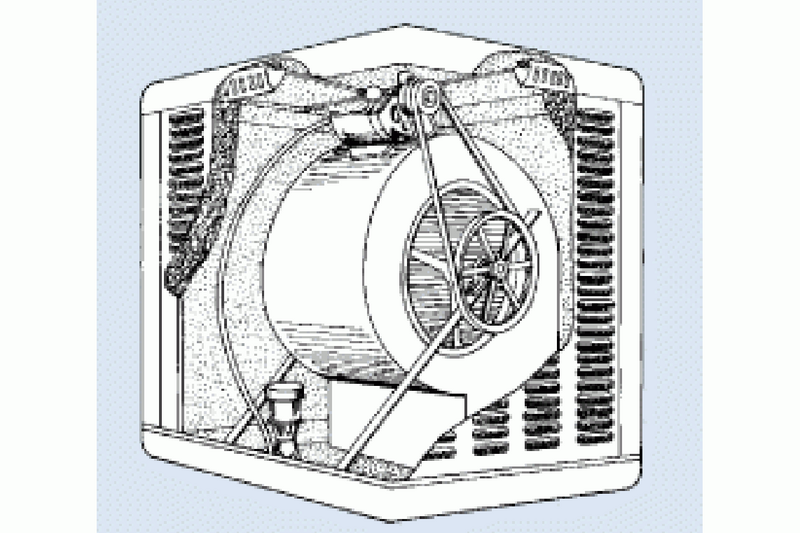- AppliancesElectriciansHVACLandscapingLocksmithPest ControlPlumbingRenovationRoofingT V RepairAll Home Improvement
- Car AccidentClass ActionCorporate LawCriminal DefenseDivorce LawEmployment LawFamily LawFinancial LawLegal AidMedical Injury LawyersMedical MalpracticeReal Estate LawWater Fire RestorationAll Legal
- InvestmentRetirementAll Finance
- Animal InsuranceAutoGeneral InsuranceHealth PolicyHome RentersAll Insurance
- DentalHealth SpecialistsAll Medical
- Animal CareVeterinaryAll Pets
- Auto GlassTowingAll Automotive
What Is a Swamp Cooler?

Despite its unappealing name, a swamp cooler could be an excellent addition to your HVAC system if you're looking for an efficient cooling unit. Installing a swamp cooler can help the environment and your bank balance — and, unlike older versions, a modern model won't make your home smell swampy.
Read More Heating and Cooling Articles
However, swamp coolers aren't the right option for every household. Here’s everything you need to know.
Swamp coolers, also known as evaporative coolers, are energy-efficient units that use evaporation to reduce the air temperature inside your home. There are several types of swamp coolers available:
- Central roof-mounted units that circulate cooled air throughout an entire house via the ductwork, similar to a central air conditioner
- Window-mounted units designed to cool a single room or zone
- Portable evaporative coolers that cool the air over a limited area
Most residential evaporative coolers deliver between 3,000 and 25,000 cubic feet per minute (CFM). Therefore, you can select a unit to suit the size and layout of your home. Many units also offer a vent-only mode that enables the swamp cooler to double as a whole-house fan to improve air circulation during cooler weather.
How Does a Swamp Cooler Work?
Swamp coolers contain water-soaked pads and an air circulation fan. They work by passing hot outdoor air over the wet pads, causing the water to evaporate and form droplets in the air. According to the U.S. Department of Energy, this process can reduce the internal air temperature by 15 to 40 degrees Fahrenheit (8 to 22 degrees Celsius) when used in a suitable climate.
Humidity and heat can quickly build up if you use a swamp cooler with the windows shut. Therefore, you'll need to open the windows in the rooms you want to cool to allow hot air and moisture to escape. As a rule of thumb, you should aim for an opening of between 1 and 2 square feet for optimal cooling.
Alternatively, you can install up-ducts to allow air to escape into the roof cavity. However, you may need to ventilate your roof to prevent heat and moisture buildup inside your attic.
Evaporative cooling uses roughly 25% of the energy of a standard household air conditioner. Therefore, a swamp cooler could be a great option if you want to reduce your energy bills or operate a more eco-friendly HVAC system.
More Related Articles:
- Hiring an HVAC Tech? Here are 5 Top Tips
- What's in My HVAC Technician's Van?
- HVAC Out? 5 Common Causes and Quick Fixes for Each
- How Much Does an HVAC Filter Cost?
- HVAC Upkeep Costs: Everything You Need to Know
You could benefit from a swamp cooler if you live in a relatively dry, mild climate. Evaporative coolers can't cool humid air effectively because they lower the temperature by adding moisture. Furthermore, they may not provide enough cooling power in very hot environments.
Another factor to consider when deciding whether to install a swamp cooler is the water supply in your area. Swamp coolers rely on water to soak the evaporative pads, which can put additional pressure on an already overstretched water supply. You may be better off with a different cooling system if you experience frequent water shortages.
Elocal Editorial Content is for educational and entertainment purposes only. Editorial Content should not be used as a substitute for advice from a licensed professional in your state reviewing your issue. Systems, equipment, issues and circumstances vary. Follow the manufacturer's safety precautions. The opinions, beliefs and viewpoints expressed by the eLocal Editorial Team and other third-party content providers do not necessarily reflect the opinions, beliefs and viewpoints of eLocal or its affiliate companies. Use of the Blog is subject to the
Website Terms and Conditions.The eLocal Editorial Team operates independently of eLocal USA's marketing and sales decisions.



